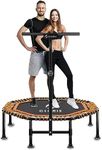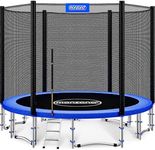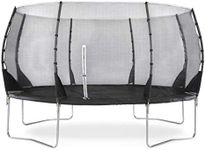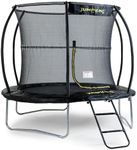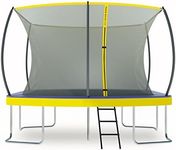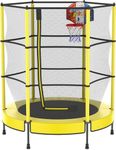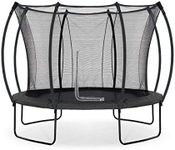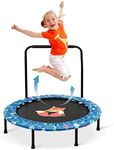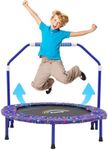Buying Guide for the Best Outdoor Trampolines
Choosing the right outdoor trampoline involves considering several factors to ensure safety, durability, and enjoyment. It's important to think about who will be using the trampoline, how much space you have, and what features are most important to you. By understanding the key specifications, you can make an informed decision that best suits your needs and preferences.SizeThe size of a trampoline is crucial as it determines how much space it will take up in your yard and how many people can use it at once. Trampolines come in various sizes, typically ranging from 8 feet to 16 feet in diameter. Smaller trampolines are suitable for younger children or smaller spaces, while larger trampolines are better for older kids, adults, or multiple users. Consider the available space in your yard and the age and number of users when choosing the size.
ShapeTrampolines come in different shapes, including round, rectangular, and oval. Round trampolines are the most common and are designed to keep users towards the center, making them safer for children. Rectangular trampolines offer a larger jumping area and are preferred by gymnasts and athletes for their even bounce. Oval trampolines provide a combination of the two, offering more jumping space while still being relatively safe. Choose the shape based on the intended use and the available space.
Weight LimitThe weight limit of a trampoline indicates the maximum weight it can safely support. This is important for safety reasons, as exceeding the weight limit can lead to damage or accidents. Trampolines with higher weight limits are suitable for families or multiple users, while those with lower limits are better for individual use or younger children. Consider who will be using the trampoline and ensure the weight limit meets your needs.
Safety FeaturesSafety features are essential to prevent injuries while using a trampoline. Common safety features include enclosure nets, padded springs, and sturdy frames. Enclosure nets help prevent falls, while padded springs reduce the risk of injury from landing on hard metal. A sturdy frame ensures the trampoline remains stable during use. Prioritize trampolines with comprehensive safety features, especially if children will be using it.
DurabilityDurability refers to how well a trampoline can withstand regular use and exposure to the elements. Look for trampolines made from high-quality materials, such as rust-resistant frames and UV-protected mats, to ensure longevity. Durable trampolines are a better investment as they require less maintenance and replacement over time. Consider the climate in your area and how often the trampoline will be used when assessing durability.
Assembly and MaintenanceThe ease of assembly and maintenance can affect your overall experience with a trampoline. Some trampolines come with detailed instructions and require minimal tools, making them easier to set up. Maintenance involves checking for wear and tear, ensuring the frame and springs are in good condition, and replacing any damaged parts. Choose a trampoline that offers straightforward assembly and maintenance to save time and effort.
